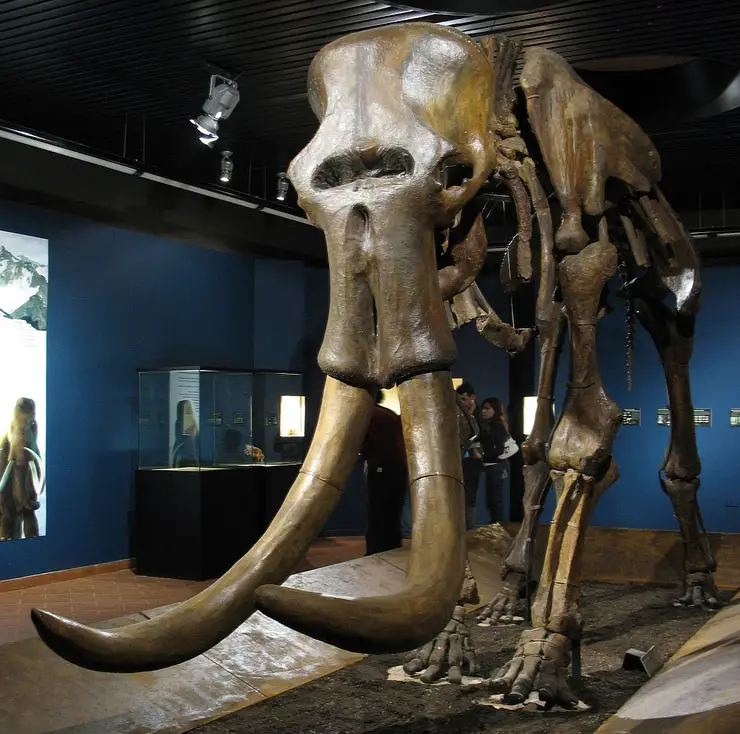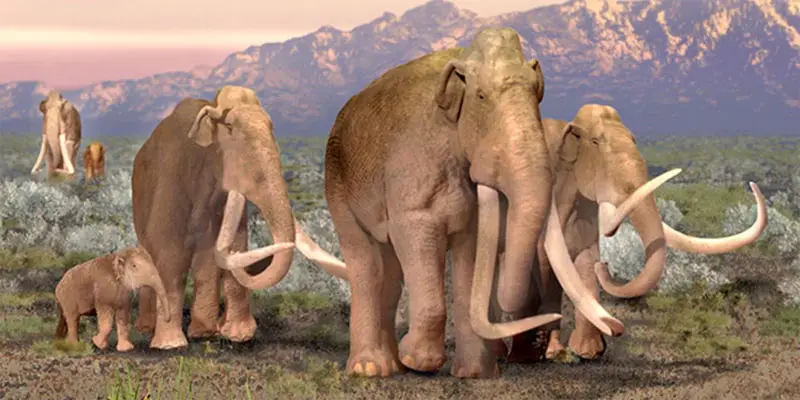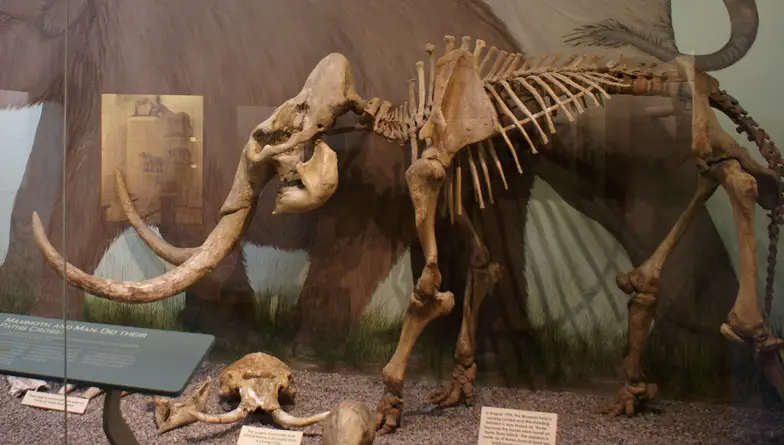From Giant Steppe to Pygmy Mammoth
Table of Contents
The mammoth is one of the iconic mega beasts that walked the earth. Although several species of mammoth evolved their extinction along with other mega beasts is a mystery
Extinct Mammoths and Mastodons, along with elephants today, belong to a group called proboscideans, which are mammals with trunks. (The term Proboscidea is derived from the Greek word ‘pro’ for ‘before’ and ‘boskein’ meaning ‘to feed’. Although related, Mammoths, Mastodons, and elephants have evolved from different branches of the ancestral proboscidean tree.
The Oldest Mammoth Fossil
The oldest mammoth remains found to date can be traced back to Africa, to the early Pliocene Epoch, some five million years ago. A diverse creature, Mammoth varied in size depending on the species, ranging from 5 feet (1.5 m) to 16 feet (approximately 5 m) at the shoulder.
The Mammoth is a species that colonized much of the planet, although no remains have been found in Australia or South America.
https://www.youtube.com/watch?v=1yvoBEWE18k
It is thought that the first Mammoth to reach North America took a route that crossed from Asia to Alaska via an area now known as the Bering Sea. The sea level was some 400 feet (120 m) lower than it is today, and the area, which is now covered by water, was once dry land.
Steppe Mammoth Facts
The Steppe Mammoth was the largest species, (Mammuthus trogontherii) standing 16 feet (5m) at the shoulder with tusks some 17 feet (5.2m) in length, it lived in Eurasia, happily existing in grassland and wooded habitats of the middle Pleistocene Epoch.

Columbian Mammoth Facts
A later arrival was the Columbian Mammoth (M. columbi). It inhabited North America from the late Pleistocene. Standing 12 feet (3.7m) it had twisted tusks some of which were the largest tusks on record. These were excavated in Texas USA, measuring approximately 16 feet (4.9 m) in length and weighing 208 lb (94.6 kg).

Woolly Mammoth Facts
The Woolly Mammoth (M. primigenius), was characterized by its long woolly coat, which hung in dense ringlets over a shorter, thicker undercoat. It stood just 9 feet (2.7m) at the shoulder, with tusks some 11.5 feet (3.5m) in length, and weighed approximately 3 tons.
Closely related to the modern Indian Elephant, scientists working in the field of genetics have theorized over the viability of cloning a woolly mammoth if enough DNA could be gathered using a female Indian elephant as a host. The Woolly Mammoth lived from the Pleistocene to the early Holocene epoch (120.000 to 4,000 years ago).
Pygmy Mammoth Facts
A number of ‘pygmy’ species of Mammoth are known to have evolved. Tiny in comparison to their gigantic cousins, the pygmy species became adapted to island life where food and ranges were restricted. An example of this was the Pygmy Mammoth (Mammuthus exilis). Remains have been found on the Channel Islands of Santa Cruz, Santa Rosa, and San Miguel. It is thought that ‘full-sized’ mammoth swam the five or so miles from the USA mainland and adapted over generations to their new habitat. A full-size skeleton of Pygmy Mammoth was excavated in 1994; radiocarbon dating has determined that this animal lived about 13,000 years ago. Another species of pygmy Mammoth has been discovered on the island of Sardinia, Mammuthus lamarmorae, it stood just 5 feet at the shoulder.

The teeth of the Mammoth were large and durable; they had to be if they were to cope with grinding the estimated 700lb (320 kg) of vegetation necessary to keep these huge beasts alive. They had 24 teeth in total and like their modern counterparts; each tooth was replaced as it wore out until the sixth and final set had erupted. Usually, the six sets lasted until the Mammoth was 70 to 80 years of age. Tusks, which are overgrown incisors continued to grow throughout the animal’s life. And like the growth rings on trees, tusks can be examined to determine the condition of the animal with large growth spurts indicating favorable conditions. Tusks had a number of uses, on a day-to-day basis in digging vegetation out of the ground and snow, during mating rituals, and for deterring predators. It has also been suggested that flattened areas of tusks can determine whether the animal was left or right tusked!
At least three species of Mammoth are known to have co-existed with early human populations during the Pleistocene epoch. Apart from carbon dating skeletal remains, there are also a number of paintings on the walls of the Chauvet caves in south-eastern France, inhabited by the man some 30,000 years ago.
Unlike dinosaurs, which have been extinct for millions of years, we know exactly what Mammoths looked like as a number of complete specimens have been discovered. A Russian Botanist, Mikhail Adams who excavated his specimen in 1806 near Lena River, Siberia, found the first. In 1999 scientists in Siberia discovered the frozen remains of a Woolly Mammoth entombed in mud, which also contained plants and insects from 20,000 years ago. The specimen, officially called the Jarkov mammoth was safely transported to an ice cave where an arduous task of thawing it out has begun.
Extinction Theories
A number of theories have developed to explain the extinction of these mega beasts, these include:
- Climatic change. Possibly the change in temperature brought about a change in environmental conditions so quickly that these mega beasts couldn’t adapt. For example a change in the type of vegetation? However, the counter-argument to this is the development of pygmy species.
- Competition from Man. With the arrival of humans, mega beasts faced increased competition for space and overhunting.
- Hyper disease Hypothesis
The reason for the extinction of the mammoth and other mega beasts such as Sabre Toothed cats, Woolly Rhino and Giant Ground Sloth all around the same time has yet to be discovered, especially when populations of Mammoth, for example, those on Wrangle Island, a 2000 square miles landmass in the Chukchi Sea off northeastern Siberia, existed until 4,000 years ago.
Sources:
- Mammoths, Giants of the Ice Age by Adrian Lister and Paul G. Bahn
- MammothSite.com
- BBC.co.uk .science & nature>animals>wolly Mammoth
- Discovery Channel, Jarkov Mammoth
